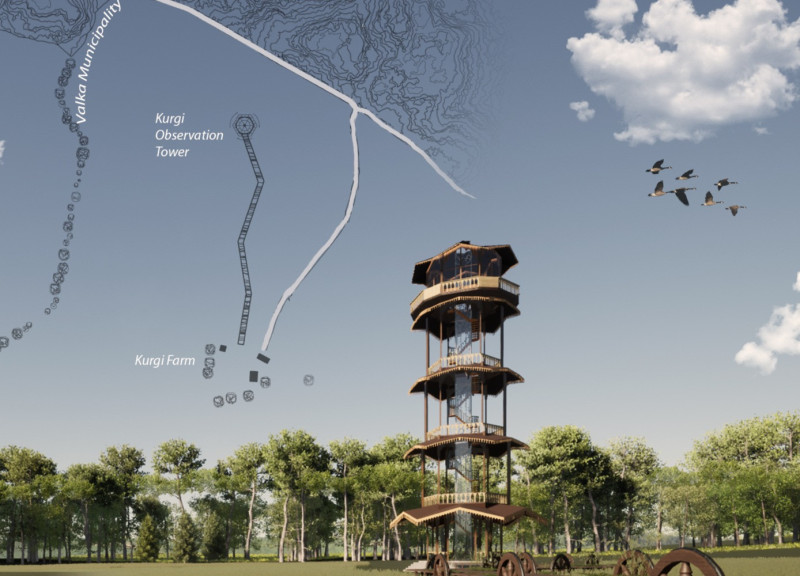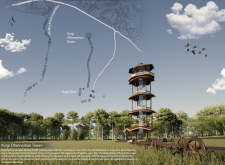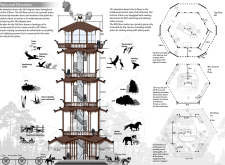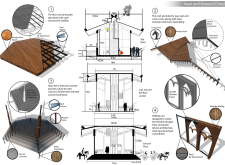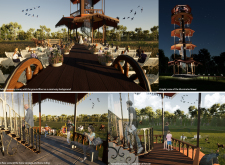5 key facts about this project
The Kurgi Observation Tower is located in Kurgi, Valka Municipality, an area rich in farmland and diverse wildlife. Designed to connect with its surroundings, the tower serves educational and recreational purposes. The design aims to provide an elevated view, allowing visitors to appreciate the local flora and fauna, particularly the rare Ardennes horses that inhabit the area.
Design Concept and Functionality
The overall plan centers on enhancing the visitor experience through panoramic views. The tower comprises five floors, with the first four levels featuring educational exhibits that highlight local biodiversity. Each floor includes viewing binoculars to facilitate bird-watching and connect guests to their environment. Accessibility is an important aspect, with an elevator included to ensure that everyone can engage with the various levels.
Material and Structural Details
Materials play a significant role in the construction of the tower. The presentation mentions wooden flooring throughout, creating a warm and inviting atmosphere. A steel structure provides stability and supports the open design, allowing for the necessary height and expansive views. The railings feature traditional Latvian architectural details, reinforcing the tower’s connection to local heritage.
Visitor Experience and Aesthetic Integration
As visitors move through the tower, they encounter spaces designed for both learning and relaxation. The top floor is a private area with wooden doors and large windows that offer unobstructed views of the landscape. A balcony extends from this level, allowing guests to step outside and take in their surroundings. The thoughtful arrangement of spaces promotes a sense of connection to nature, making it easy for visitors to appreciate the beauty of Kurgi’s farmlands.
The Kurgi Observation Tower represents a careful balance between architecture and nature. Its design prioritizes visitor experience while celebrating the unique local environment. The details contribute to a structure that invites exploration and encourages a deeper interaction with the landscape.


